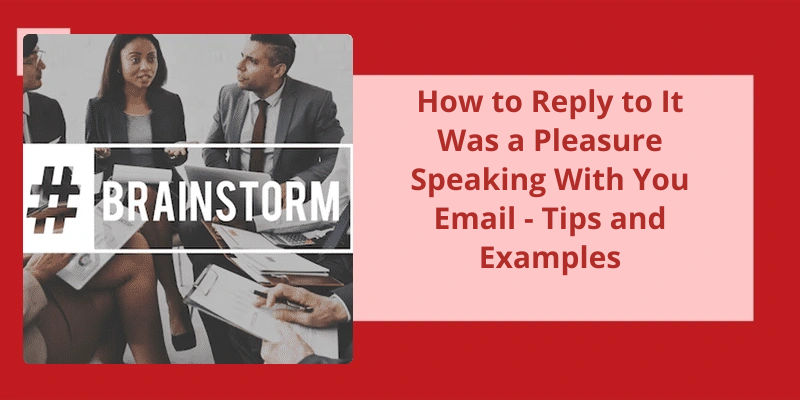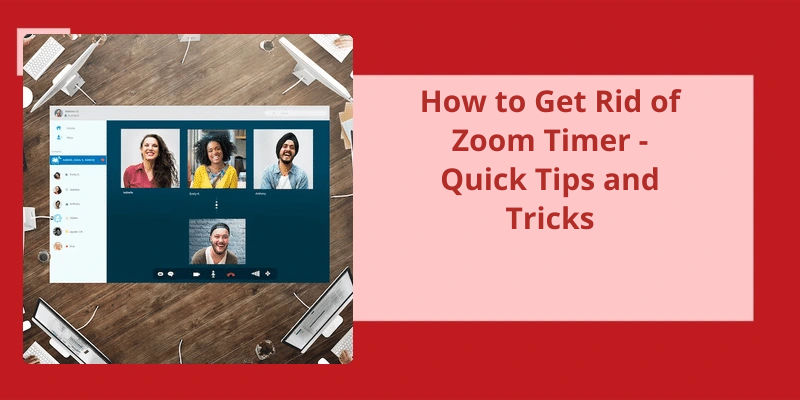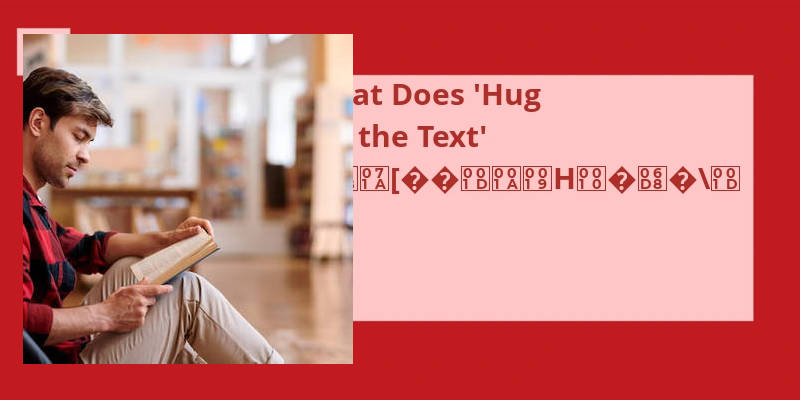When it comes to professional communication, the way we respond to different types of messages can make a significant impact on our relationships with colleagues, clients, and partners. One type of message that often requires a thoughtful response is when someone tells us, "It was a pleasure speaking with you." Although seemingly straightforward, responding to this message can actually be a bit tricky. On the one hand, we want to express gratitude and appreciation for their kind words. On the other hand, we don't want to come across as insincere or cliché. So what exactly should we say? In this article, we'll explore the best way to respond to "It was a pleasure speaking with you" in a professional, courteous, and memorable manner.
How to Respond to It Was a Pleasure Speaking With You Today?
This response shows that we appreciate their time and value their conversation. It also shows our own politeness and kindness in return. Saying “you too” is a nice way to reciprocate the sentiment and create a friendly atmosphere. It encourages the person to continue building a positive relationship with us.
However, we may also want to add a little more substance to our response, especially if the conversation was particularly meaningful or informative. If someone provided us with helpful advice or shared valuable insights, we could say “thank you for your valuable input. I really appreciate it.”. This acknowledges their contribution and further demonstrates our appreciation.
Another option for a more personalized response is to mention something specific about the conversation that stood out to us. For example, if someone shared a funny story or tidbit of information, we could say “I really enjoyed hearing about your experience with (insert topic). It was very interesting.”. This shows that we were fully invested in the conversation and appreciated their unique perspective.
If we’re communicating with a potential employer or client, we could use this opportunity to showcase our professionalism and enthusiasm. We could say “thank you for taking the time to speak with me. I”m looking forward to further discussing (insert topic) and the potential for (insert future collaboration).”. This response shows that we’re serious about working together and eager to move forward.
Ultimately, the most important thing is to be genuine and sincere in our response. We should aim to naturally express our gratitude and appreciation for the conversation and the person we spoke with. Whether it’s a formal or informal setting, a short or long conversation, our response should reflect our true emotions towards the encounter. By doing so, we create a positive and memorable experience for everyone involved.
Tips for Following Up After the Conversation, Such as Sending a Thank-You Note or Email
When you’ve a conversation with someone, it’s always a good idea to follow up with them. This could involve sending them a thank-you note or email to express your gratitude for the chat, among other things. Doing so shows that you appreciated the time they spent with you and that you value their input. Additionally, following up keeps the conversation going, which can help build a stronger relationship.
As we wrap up our discussion on email etiquette, let’s briefly touch on the appropriate ways to express pleasure in speaking with someone through email. While there are several alternatives, such as “it was nice talking to you,” “it was great to talk to you,” “it was a pleasure meeting you,” and “it was nice to meet you,” it’s important to remember that sincerity and warmth are key when expressing gratitude and appreciation.
How Do You Say It Was Nice Speaking With You in Email?
You can use alternative phrases that have the same or similar meanings, including “it was nice talking to you,” “it was great to talk to you,” “it was a pleasure meeting you,” “it was nice to meet you,” and “it was good talking to you.”. Each of these phrases conveys gratitude and appreciation, and they can help humanize your email conversation.
It makes your email feel more sincere, warm, and engaging. In addition, using different phrases each time can help keep your email conversations fresh and prevent them from becoming stale or monotonous.
It’s important to note that not every phrase is appropriate for every situation. For instance, “it was great to talk to you” may be more suitable for a conversation that involved laughter and casual discussions, while “it was a pleasure meeting you” might be appropriate for a more formal or professional conversation. Therefore, it’s essential to select a phrase that matches the tone and purpose of the email conversation.
Be sure to select a phrase that matches the tone of the conversation, and don’t be afraid to mix it up for each email.
The Importance of Expressing Gratitude in Email Communication
Expressing gratitude in email communication is crucial because it helps to build positive relationships and boost morale. It shows that you appreciate and value the work of others, and can increase overall productivity and motivation. Moreover, a simple “thank you” can go a long way in creating a positive work environment.
Now that we know what “My pleasure” means and when to use it, let’s take a closer look at the different scenarios in which we can employ this polite response.
Can I Reply My Pleasure to Thanks?
The phrase “My pleasure” is also commonly used in service industries to respond to a customer’s thanks for good service. In this context, it serves to demonstrate that the service provider enjoyed serving the customer and is delighted that they were able to provide a satisfactory experience.
Furthermore, it’s worth noting that “My pleasure” isn’t the only appropriate response to “Thank you.”. Depending on the context, other responses can be more appropriate. For example, in a casual setting, “No problem” or “Sure thing” can also be good options. In a more professional context, “You’re welcome” is often used.
When deciding how to respond to someone’s thanks, it’s important to consider the context and the relationship between the individuals. A response that’s appropriate in one setting may not be appropriate in another. Additionally, it’s important to be sincere in your response. If you didn’t actually enjoy providing the service or assistance, you may want to choose a different response that accurately reflects your feelings.
By doing so, we acknowledge their appreciation and demonstrate our own appreciation for their recognition. It’s a simple but important aspect of building positive relationships and showing respect towards others.
It expresses genuine gratitude, warmth, and happiness at having been of service, making it an excellent choice for many situations. However, it’s important to remember that other responses may also be appropriate, depending on the context and relationship between the individuals.
Source: Can we say ‘pleasure is all mine’ while responding to a ‘ …
As professionals, it’s essential to know how to respond to emails effectively and efficiently. Responding promptly, using appropriate language and tone, and addressing the sender’s concerns accurately are some of the key factors to consider. In this article, we will discuss a few tips and tricks to help you craft an effective response to a professional email and maintain a positive and productive communication channel with your colleagues, clients, and partners.
How Do You Respond to a Professional Email Example?
When it comes to responding to a professional email example, it’s important to keep in mind the purpose and tone of the original message. In this case, the sender is likely looking for a response or resolution to a specific issue or inquiry. As the recipient, it’s your responsibility to provide a timely and helpful response.
First and foremost, it’s important to acknowledge receipt of the original email. This can be done simply by stating “Thank you for your email regarding [subject of original email].”. This not only lets the sender know that their message was received, but also shows that you’re attentive and responsive in your communication.
Next, it’s important to indicate that you’ll be reviewing the original email promptly. This shows that you take the senders concerns seriously and are actively working to find a resolution. Depending on the situation, it may also be appropriate to provide an estimated timeline for when the sender can expect a more detailed response.
It’s also important to offer assistance or ask if the sender has any additional questions. This shows that you’re approachable and willing to help, and can potentially prevent further back-and-forth emails. By being proactive in your communication, you can help to facilitate a productive and efficient exchange.
Finally, make sure to end the email on a positive note. Sign off with a phrase such as “Best regards” or “Sincerely,” and include your name and contact information. This not only provides a professional touch, but also ensures that the sender knows how to follow up with you if necessary.
When we’ve a nice conversation with someone, whether it’s casual or business-related, it’s always good to express our gratitude towards them for taking the time to speak with us. Saying “thank you” is a simple yet effective way to convey our appreciation. However, sometimes we can be at a loss for words or want to spice things up a bit. So, here are 13 different ways to say “thank you for reaching out” or “thank you for a nice conversation.”
How Do You Say Thank You for a Nice Conversation?
When someone engages you in a nice conversation, it’s important to acknowledge the effort they’ve put in and show gratitude for their time. There are many ways to say thank you for a nice conversation, and choosing the right one can go a long way in strengthening your relationship with the person. Here are thirteen ways to say, “Thank you for reaching out.”
One simple way to express gratitude is to say, “Thank you for getting in touch with me.”. This straight-forward approach lets the other person know that you recognize their effort and appreciate it.
Another option is to say, “Thank you for contacting me.”. This phrase is slightly more formal and might be more appropriate if the conversation was of a professional or business nature.
If you want to go the extra mile, you can say, “Thank you for your words.”. This phrase not only expresses gratitude for the conversation but also acknowledges the value and meaning of the other persons words.
Another way to show gratitude is to say, “Please accept my thanks.”. This phrase is slightly more formal and might be used in situations where you want to express gratitude to someone in a more official capacity.
If you want to be more effusive, you can say, “I appreciate you reaching out.”
Similarly, you can say, “Im so grateful to you.”. This phrase emphasizes the depth of your gratitude and conveys a strong sense of appreciation for the other persons effort.
If the conversation was more about exchanging ideas or thoughts, you can say, “Thank you for your thoughts.”. This phrase acknowledges the value of the other persons ideas and indicates that you found the conversation insightful and worthwhile.
Finally, you can simply say, “It was very nice to hear from you.”. This phrase expresses gratitude while also indicating that you enjoyed the conversation and would be happy to talk again in the future.
Conclusion
In closing, responding to compliments and pleasantries such as "it was a pleasure speaking with you" may seem like a small gesture, but it goes a long way in maintaining positive relationships and connections with others. By expressing gratitude through a simple "thank you" or "thanks," we acknowledge the effort and kindness that goes into communication. Whether it be in a professional or personal setting, showing appreciation and acknowledging others' efforts is a crucial aspect of effective communication and building strong relationships. So, the next time someone tells you it was a pleasure speaking with you, consider responding with a genuine and grateful "thank you."






